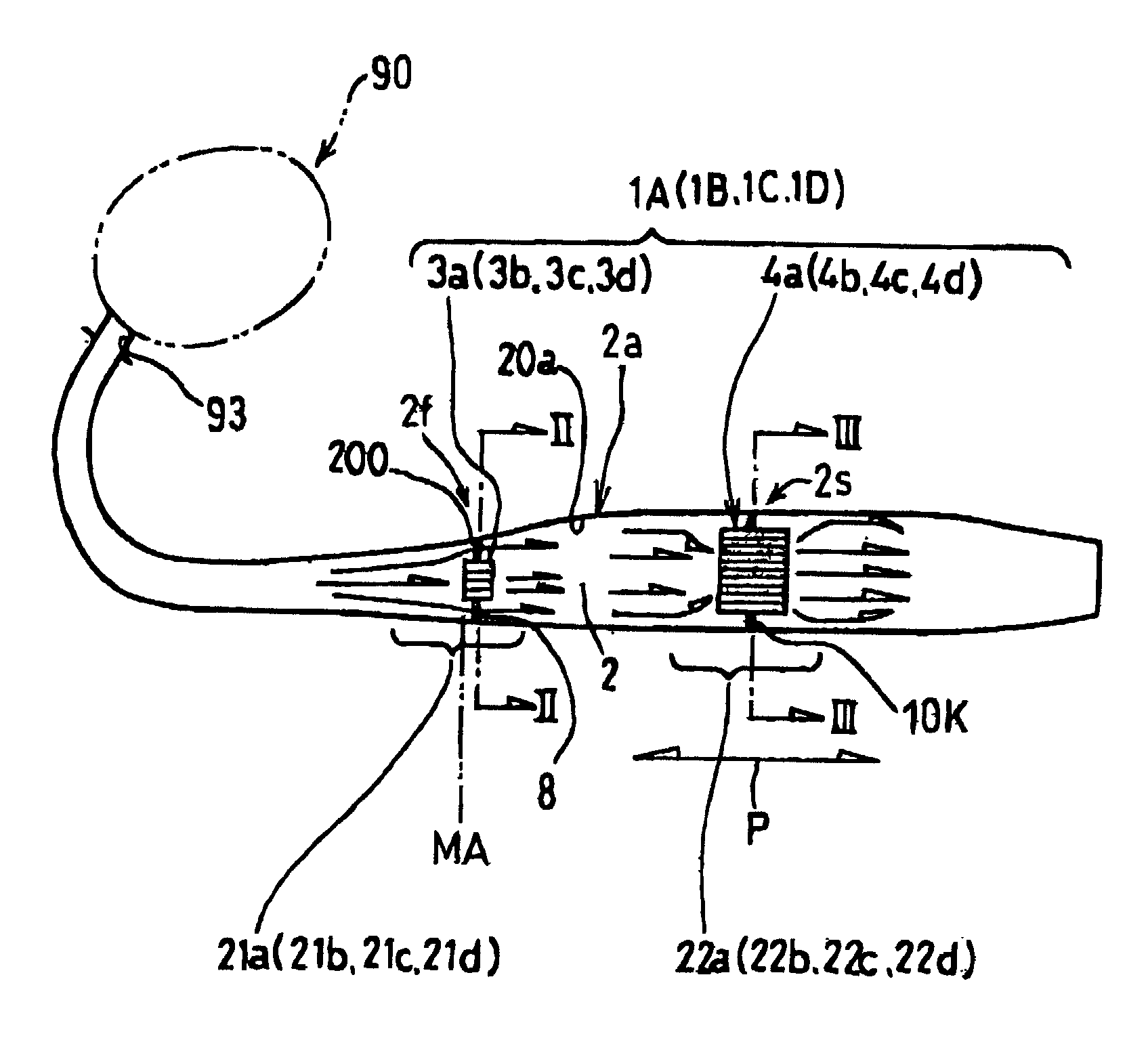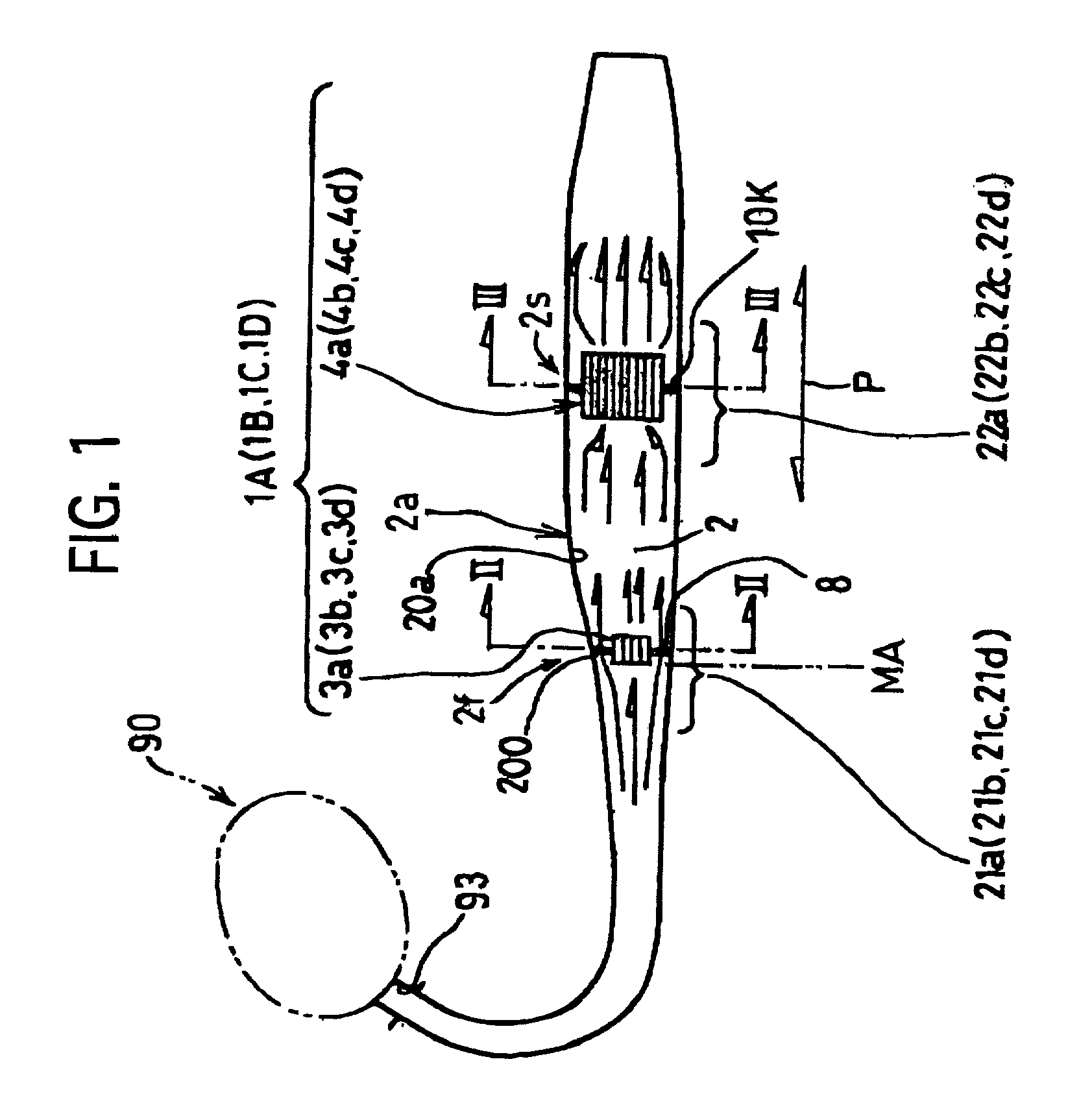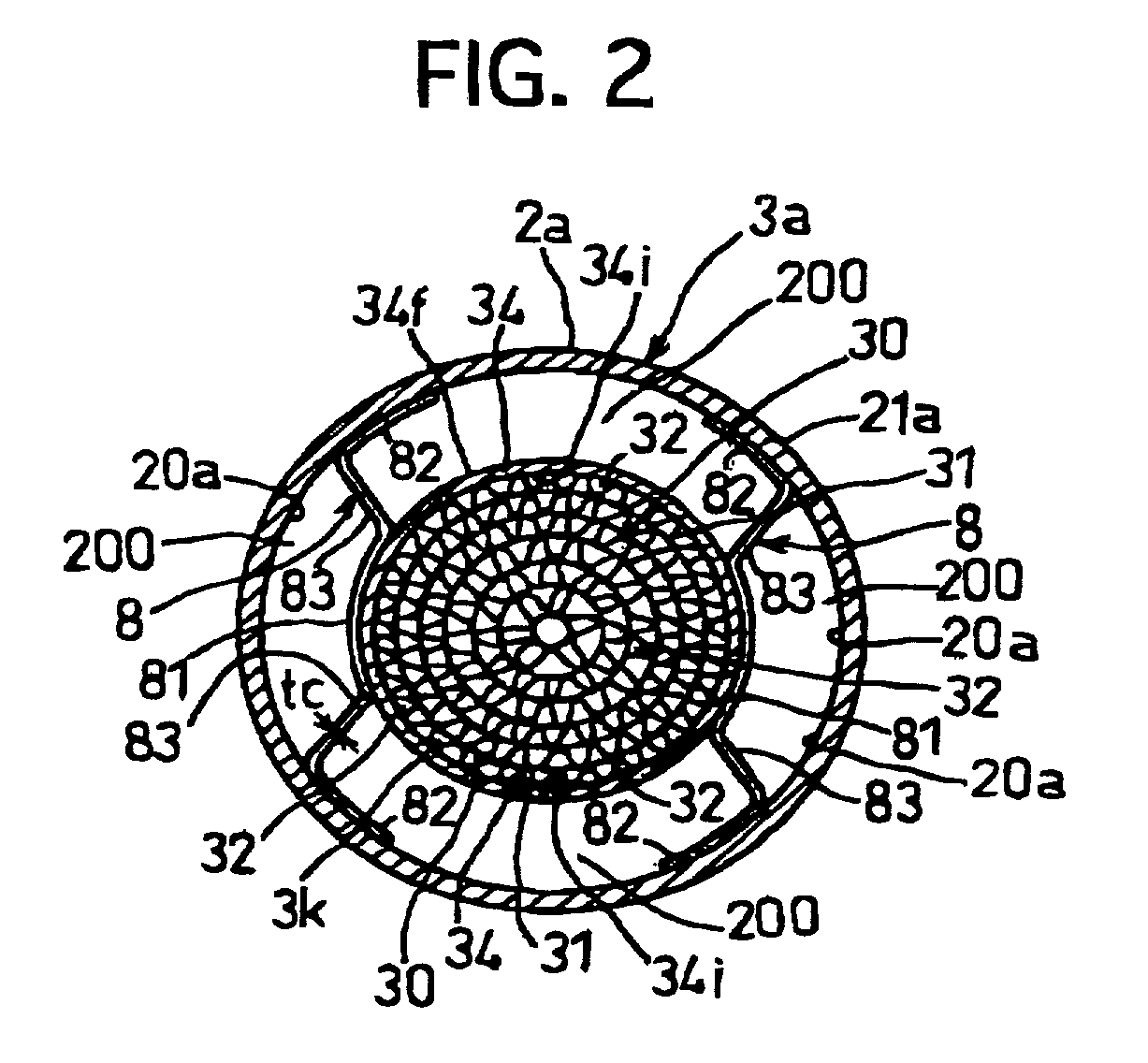Exhaust gas purifying apparatus
a technology of exhaust gas and purification apparatus, which is applied in mechanical equipment, machines/engines, separation processes, etc., can solve the problems of insufficient purification rate and small contact area with exhaust gas, and achieve the effect of raising the purification ability of exhaust gas, suppressing the decrease of engine output, and increasing purification ra
- Summary
- Abstract
- Description
- Claims
- Application Information
AI Technical Summary
Benefits of technology
Problems solved by technology
Method used
Image
Examples
embodiment 1
[0056]FIG. 1 illustrates an exhaust gas purifying apparatus 1A of Embodiment 1. The exhaust gas purifying apparatus 1A is applied to a 2-stroke cycle engine 90 of a motorcycle. This apparatus 1A has an exhaust pipe 2a, a first honeycomb catalyst portion 3a, and a second honeycomb catalyst portion 4a. The exhaust pipe 2a forms an exhaust way 2 communicated with the exhaust port 93 of the 2-stroke cycle engine 90. The fist honeycomb catalyst portion 3a is placed in a first mounting position 2f of a small diameter portion (the first catalyst region) 21a formed at an upstream side of the exhaust way 2. The second honeycomb catalyst portion 4a is placed in the second mounting position 2s of a large diameter portion 22a (the second catalyst region) formed at a downstream side separated at a predetermined distance from the small diameter portion 21a in a longitudinal direction “P” of the exhaust pipes 2.
[0057]That is to say, the exhaust way 2 of the exhaust pipe 2a has the small diameter p...
embodiment 2
[0078]Embodiment 2 is substantially the same as Embodiment 1 in construction, function and effect. The surroundings of difference will be hereinafter described. FIG. 1 illustrates an exhaust gas purifying apparatus 1B of Embodiment 2. The exhaust gas purifying apparatus 1B has an exhaust pipe 2a, a first honeycomb catalyst portion 3b, and a second honeycomb catalyst portion 4b. The exhaust pipe 2a forms the exhaust way 2 communicated with the exhaust port 93 of the 2-stroke cycle engine 90. The first honeycomb catalyst portion 3b is placed in a first mounting position 2f of a small diameter portion (the first catalyst region) 21b formed at the upstream side of the exhaust way 2. The second honeycomb catalyst portion 4b is placed in a second mounting position 2s of a large diameter portion 22b (the second catalyst region) formed at the downstream side separated at a predetermined distance from the small diameter portion 21b in a longitudinal direction “P” of the exhaust pipes 2a.
[00...
embodiment 3
[0081]Embodiment 3 is substantially the same as Embodiment 1 in construction, function and effect. The surroundings of difference will be hereinafter described. FIG. 1 also illustrates an exhaust gas purifying apparatus 1C of Embodiment 3. The exhaust gas purifying apparatus 1C has an exhaust pipe 2a, a first honeycomb catalyst portion 3c, and a second honeycomb catalyst portion 4c. The exhaust pipe 2a forms the exhaust way 2 communicated with the exhaust port 93 of the 2-stroke cycle engine 90. The first honeycomb catalyst portion 3c is placed in a first mounting position 2f of a small diameter portion (the first catalyst region) 21c formed at the upstream side of the exhaust way 2. The second honeycomb catalyst portion 4c is placed in the second mounting position 2s of a large diameter portion 22c (the second catalyst region) formed at the downstream side separated at a predetermined distance from the outlet of the small diameter portion 21c in a longitudinal direction “P” of the ...
PUM
| Property | Measurement | Unit |
|---|---|---|
| diameter | aaaaa | aaaaa |
| inner diameter | aaaaa | aaaaa |
| outer diameter | aaaaa | aaaaa |
Abstract
Description
Claims
Application Information
 Login to View More
Login to View More - R&D
- Intellectual Property
- Life Sciences
- Materials
- Tech Scout
- Unparalleled Data Quality
- Higher Quality Content
- 60% Fewer Hallucinations
Browse by: Latest US Patents, China's latest patents, Technical Efficacy Thesaurus, Application Domain, Technology Topic, Popular Technical Reports.
© 2025 PatSnap. All rights reserved.Legal|Privacy policy|Modern Slavery Act Transparency Statement|Sitemap|About US| Contact US: help@patsnap.com



